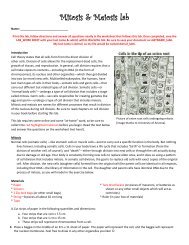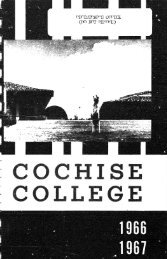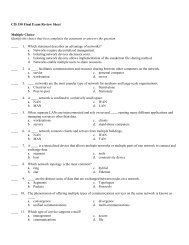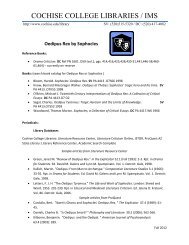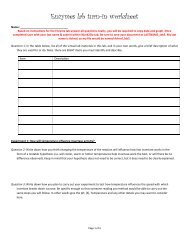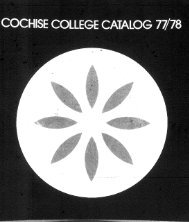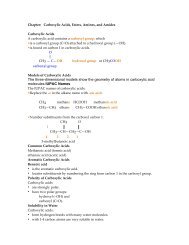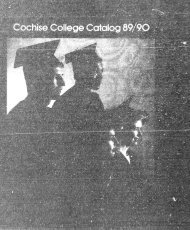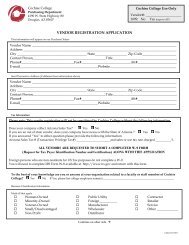You also want an ePaper? Increase the reach of your titles
YUMPU automatically turns print PDFs into web optimized ePapers that Google loves.
• isomerizes to isocitrate.• converts the tertiary –OH group in citrate to a secondary –OH in isocitrate that can beoxidized.Reaction 3 Oxidative Decarboxylation (1)Isocitrate undergoes decarboxylation (carbon removedas COB2B).• The –OH oxidizes to a ketone releasing HP +P and 2eP ‐P .• Coenzyme NADP +P is reduced to NADH.Reaction 4 Oxidative Decarboxylation (2)α‐Ketoglutarate• undergoes decarboxylation to form succinyl CoA.• produces a 4‐carbon compound that bonds to CoA.• provides HP +P and 2eP ‐P to form NADH.Reaction 5 HydrolysisSuccinyl CoA undergoes hydrolysis, adding a phosphate to GDP to form GTP, a highenergy compound.Reaction 6 DehydrogenationSuccinate undergoes dehydrogenation• by losing two H and forming a double bond.• providing 2H to reduce FAD to FADHB2B.Reaction 7 Hydration of FumarateFumarate forms malate when water is added to the double bond.Reaction 8 DehydrogenationMalate undergoes dehydrogenation• to form oxaloacetate with a C=O double bond.• providing 2H for reduction of NADP +P to NADH + HP +P .Summary of in the Citric Acid CycleIn the citric acid cycle• oxaloacetate bonds with an acetyl group to form citrate.• two decarboxylations remove two carbons as 2COB2B.• four oxidations provide hydrogen for 3NADH and one FADHB2B.• a direct phosphorylation forms GTP.Overall Chemical Reaction for the Citric Acid CycleAcetyl CoA + 3NAD+ + FAD + GDP + PBiB + 2HB2BO 2COB2B + 3NADH + 2HP +P + FADHB2B + HS‐CoA + GTP



